- Author Matthew Elmers [email protected].
- Public 2023-12-16 21:49.
- Last modified 2025-01-24 09:17.
One of the main trends in the modernization of the ground forces of the leading countries of the world is the widespread introduction of uninhabited combat modules. Uninhabited combat modules are mainly installed on armored combat vehicles, MRAP-type vehicles and even on off-road vehicles. A distinctive feature of such modules is the presence of a gyro-stabilized platform, developed multispectral means of target detection and weapon guidance, including a day and night channel, a thermal imager and a laser rangefinder.
An example is the BM-03 remotely controlled combat module developed by NPO Elektromashina JSC. The module includes a large-caliber machine gun stabilized in two planes, an ammunition compartment and an automatic reloading device, a sight with an optical and thermal imaging channel, and a laser rangefinder. The work with the module is carried out from the control panel. The module is powered from the on-board network of the vehicle.
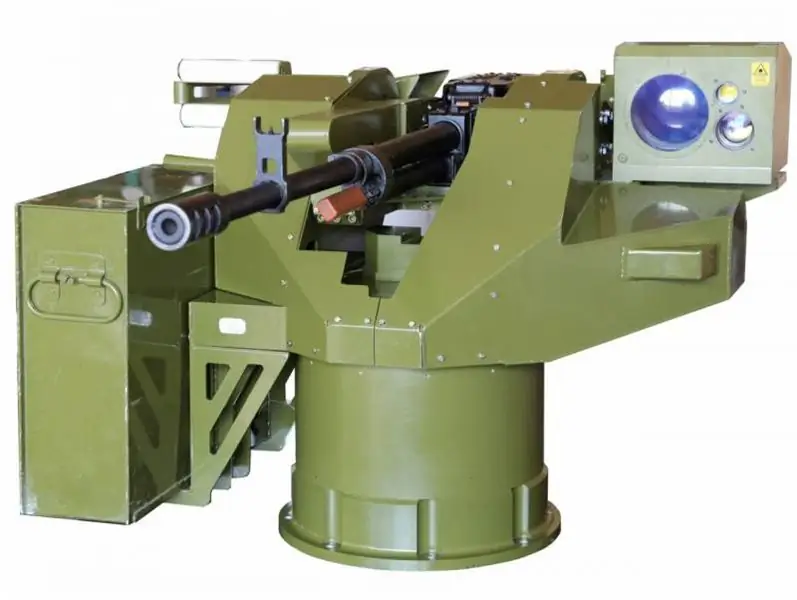
Another actively developing area is the creation of mobile robotic systems with remote control. In this case, the uninhabited module is mounted on a wheeled or tracked chassis. The module can include both small arms and missile weapons. The control of the robotic complex is most often carried out via a radio channel.
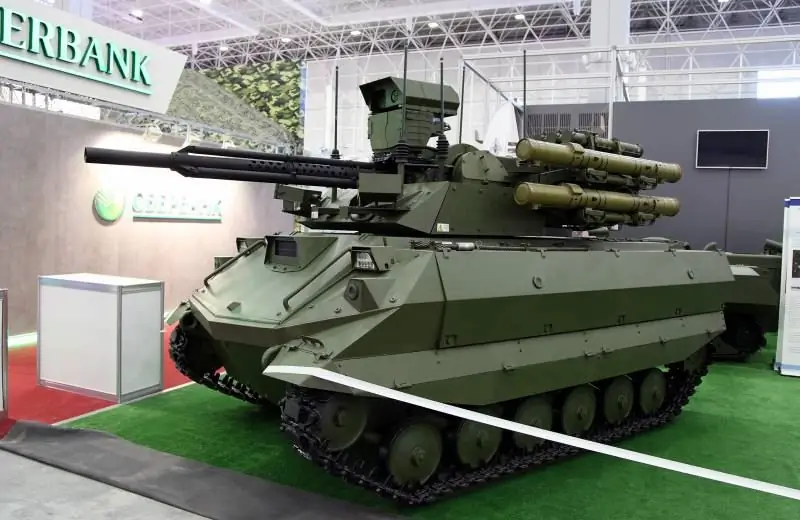
Distinctive features of the presented remotely controlled firing modules and multifunctional robotic systems are their rather high complexity and cost, due to the presence of gyro-stabilized platforms, the use of thermal imagers as part of reconnaissance and guidance equipment, and other high-tech solutions.
Another area, much less common, is portable, remotely controlled weapon systems. To distinguish them from the uninhabited modules used on vehicles, we will designate them as automated firing points (AOT).
A distinctive feature of such complexes is the presence of a tripod or other mount for placement on the ground, brackets for attaching standard samples of small arms and grenade launchers and simplified sighting devices
Remotely controlled platforms TRAP-250D and TRAP T2 manufactured by the American company Precision Remotes, Inc. can be cited as an example of the implementation of automated firing points. (PRI).
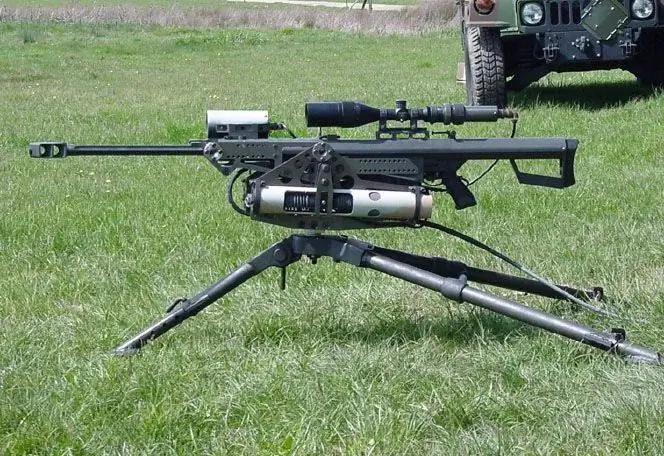
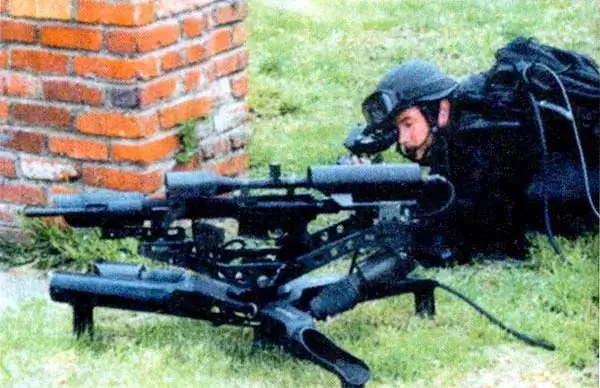
The TRAP T2 remote-controlled sniper system is a high-precision remote-controlled small arms system designed to use 5, 56 and 7, 62 mm rifles in service with the US Army.
The main structural modules of the TRAP T2 system are a platform with weapons, drives and video cameras, a control unit and a control panel. The modular design allows the installation to be used either by the sniper operator himself, or as an integrated system with the simultaneous transmission of data to the command post. In the latter case, data from the computer is sent both to the sniper operator's sight and to the command post monitor connected to the system.
The platform with a gun carriage and an AR15 rifle with a mass of 9, 14 kg has dimensions of 1016x813x457 mm. The T2L control unit weighs 4.57 kg. The mass-dimensional characteristics of the TRAP T2 system allow it to be carried by one soldier.
A more complex complex, including a stabilized platform and an integrated weapon, is the RWS Protector Super Lite portable remote weapon station of the Norwegian company Kongsberg.
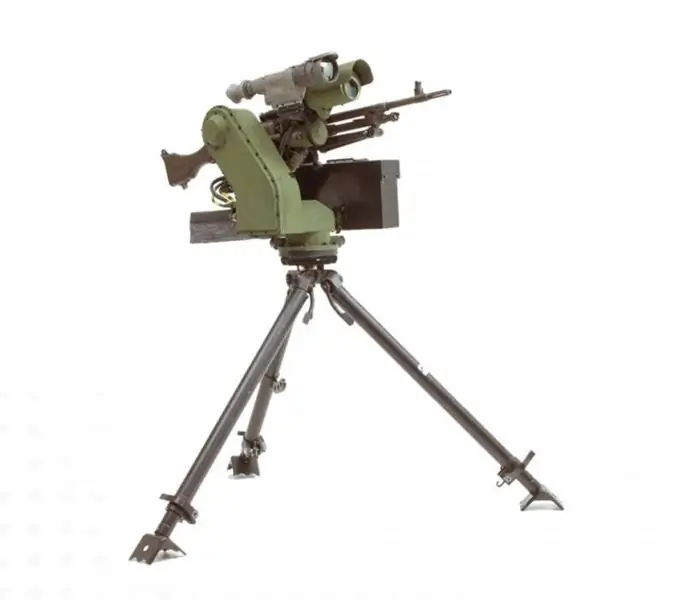
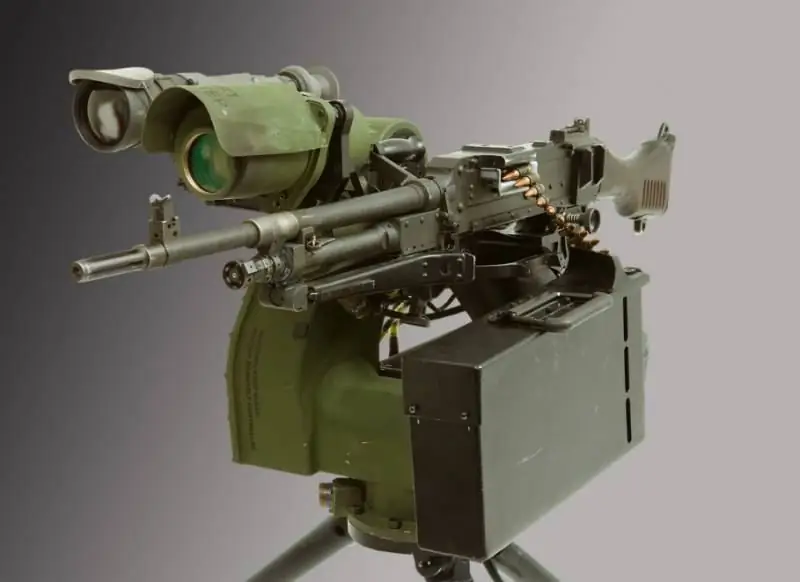
What can automated firing points be used for in the armed forces, and is there a place for them in the Russian armed forces?
Improving technology leads to the fact that soldiers on the battlefield are increasingly trying to replace autonomous technical means of armed struggle. Even if we do not take into account the cost of human life, the preparation of equipment and weapons of a modern fighter, the cost of training and maintaining it in high combat readiness, require the expenditure of significant financial resources. In addition, the loss of personnel negatively affects the morale of both the servicemen themselves and the civilian population of the belligerent country.
On the other hand, the sense of personal safety that appears when using autonomous and remotely controlled systems allows the fighter (operator) to act more confidently and decisively.
Many tasks for the automation of combat operations are solved by unmanned aerial vehicles (UAVs), ground-based armed robotic systems and even unmanned vessels. However, there are a number of tasks that can be solved cheaper and more efficiently with the help of automated firing points. Depending on the mass and dimensional characteristics, the composition of reconnaissance and weapons, they can be used to solve the following tasks:
- organization of ambushes on the routes of movement of enemy transport convoys, armored vehicles;
- organization of defense of deployed medical, repair and other auxiliary units, defense of checkpoints, temporary reinforcement of existing systems for the protection of special objects, defense of mobile missile systems when stopping on the route;
- solution of sniper and counter-sniper tasks.
The saturation of the battlefield with multispectral sensors, including thermal imagers, makes it possible to detect even well-disguised fighters. The use of a UAV with a thermal imager, while accompanying the convoys on the march, can open an ambush and lead to its destruction, or change the route of the convoy.
An automated firing point, until the start of firing, is not a source of thermal radiation, and can remain completely immobile for an arbitrarily long time.
Soldiers at checkpoints can be hit from long-range sniper weapons while on guard or in the process of fighting. A disguised automated firing point is more difficult to detect, and many of its elements are much less susceptible to damage than the human body. For example, when hitting the limbs, the efficiency of a fighter will be much reduced, hitting a tripod or an AOT bracket may not at all violate its tactical and technical characteristics (TTX).
For auxiliary units - medical, repair, the combat skills of specialists in which are obviously weaker than those of the belligerent units, AOT can help reduce losses when repelling a sudden enemy attack.
The following samples can be considered as AOT weapons - AK-74 assault rifles and their modifications with increased-capacity magazines, PKM, Pecheneg machine guns, RPG-26, RPG-29 grenade launchers, RPO-A / B flamethrowers and similar. As part of the weapon module, various types of weapons can be used, for example, AK-74 + RPG-29 or PKM machine gun + RPG-26 launchers. For the solution of sniper and counter-sniper tasks as part of the weapon module, SVD-type rifles can be used, or large-caliber (12, 7 mm) rifles of the OSV-96 type.
Regardless of the composition of the weapons, the AOT should include the following subsystems - the supporting structure, reconnaissance means, data transmission module, weapon brackets, power supply system, operator console.
The supporting structure is presumably a tripod made of profiled aluminum alloy or composite materials. The supporting structure must be equipped with electric drives that provide guidance in the horizontal and vertical planes. Provide the ability to install the complex at positions with different types of surfaces (soil, asphalt, concrete, etc.). Guidance drives should ensure the turn of the weapon and reconnaissance module with minimal power consumption. Their design must be able to withstand the recoil generated by the weaponry.
As a means of reconnaissance, both optical sights or attachments for optical sights with the function of outputting a digitized image, placed directly on the weapon, and separately installed video cameras can be used. Optionally, a night vision sight and / or a thermal imager can be mounted.
An example of an effective solution based on civilian technology is "COMBAT ProfiEye" - an optical device mounted on the scope body and allowing a GoPro camera to obtain video corresponding to the image seen by the shooter in the sight eyepiece.
The universal bracket allows you to install the COMBAT ProfiEye on any scope with a body diameter from 26 mm to 36 mm. The product comes with a pre-installed waterproof housing for the GoPro camera, does not require any special settings or preparation for use, except for installation on the scope. Because the GoPro can handle very high G-forces, it won't be a weak link and can be used on any caliber.

The data transmission module is designed to transmit video images from the reconnaissance equipment to the operator's console and to receive control commands from the operator's console to the AOT. Communication can be realized by wire or radio channel. To reduce the cost, the data transmission module should consist of two parts - the base unit, which ensures the operation of the AOT by wire and an optional wireless data transmission module.
To exclude the possibility of intercepting the control of the AOT by the adversary, which is especially important in the case of using wireless control, the control commands and the video signal must be encrypted.
To minimize the likelihood of the enemy using captured equipment, a shrink cartridge can be built into the AOT design, which burns out the main elements of the AOT. The shrink fit can be triggered when a special command is received from the control panel or when the access code is entered incorrectly over a certain number of times.
Weapon brackets for installing standard weapons on the AOT supporting structure must be equipped with an electric trigger and a shutter cocking mechanism, ensure reliable fixation of the selected type of weapon and reduce recoil due to the use of shock absorbers. A rigid installation must be provided to eliminate the need for re-zeroing after removing / installing weapons.
The power supply system must ensure the operation of reconnaissance and surveillance equipment for a given time, as well as the return of control commands to the AOT, ensuring the operation of the electric trigger and the shutter cocking mechanism.
The core of the power supply system should be a power supply unit that provides operation from DC 12V / 24V and AC 110V / 220V. Lithium-iron-phosphate batteries LiFePO4 can be used as current sources. Their advantages include a wide range of operating temperatures - from -30 ° C to + 55 ° C (-40 ° C … 60 ° C for storage). High thermal and chemical stability of LiFePO4 batteries, the possibility of safe charging with high currents and the ability to deliver a high discharge current, significantly increase the safety of battery operation. LiFePO4 batteries are manufactured in Russia by Liotech.

Low-noise gasoline and diesel generators can be used both for charging batteries and for directly supplying AOT with power in cases where the noise level is not critical or when it is possible to mask the generator / take it to a significant distance. Automotive power supplies can be used if the deployment of AOT is carried out at a short distance from vehicles.
It is most advisable to use a laptop or tablet computer made in a protected industrial or military version as an operator panel. A 10-inch rugged tablet based on the Elbrus-1C + processor has been developed in Russia. Domestic Alt Linux, Astra Linux, Elbrus can be used as an operating system. The GLONASS module is built into the tablet. The case has connectors RS-232, Ethernet, USB. There is also a numeric keypad, several function keys, stereo speakers, a microphone.

To provide AOT guidance to the target, keys, a tablet touch screen, specialized trackball or joystick manipulators can be used. You can also consider the experience of the United States - use controllers from Xbox or Playstation to control AOT. Significant advantages of this solution are its low cost and high prevalence of controllers, which will allow fighters to quickly master the management of AOT.
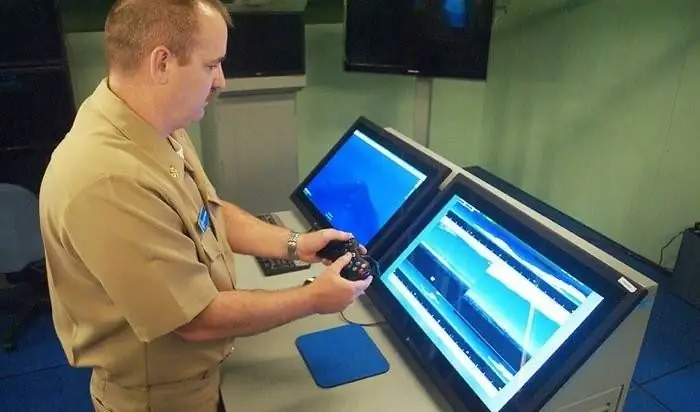
Based on the foregoing, it is possible to form an approximate appearance of automated firing points.
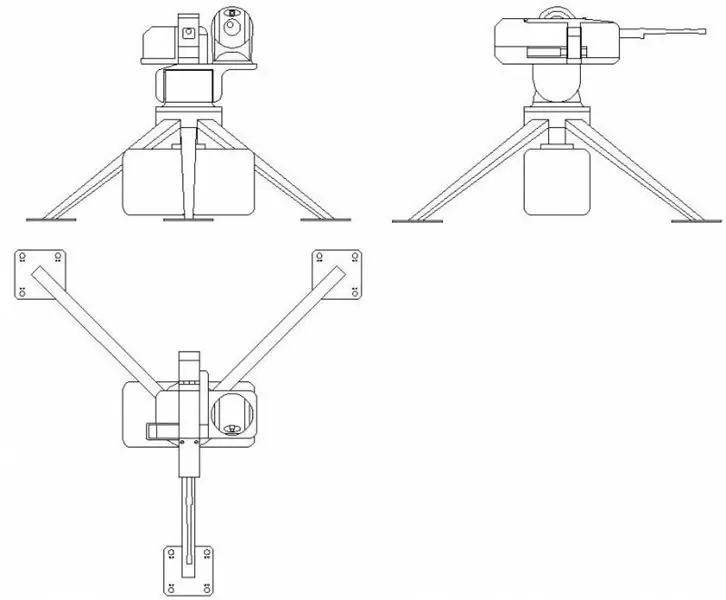
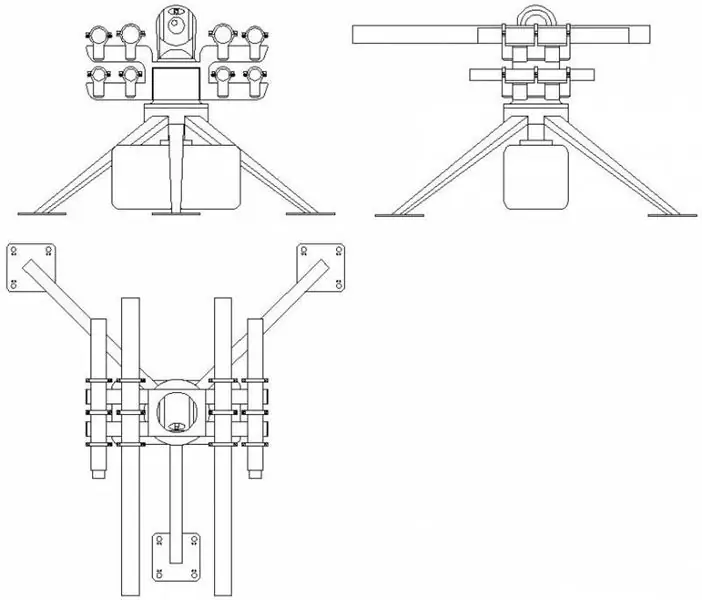
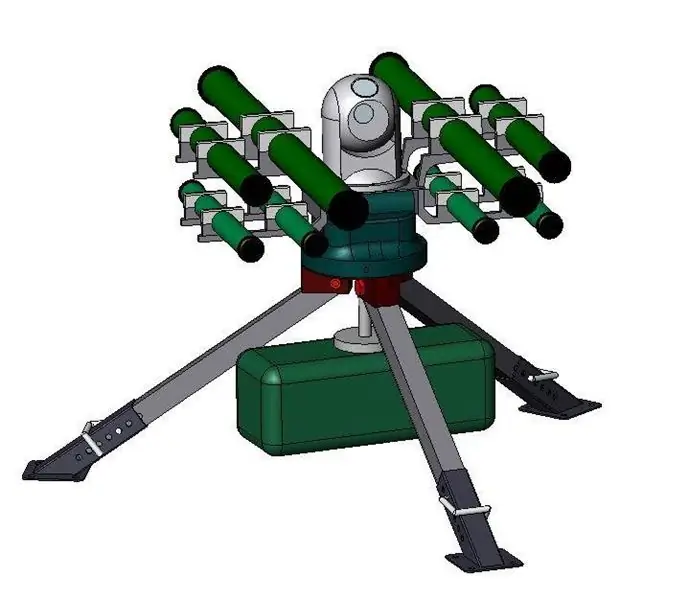
In conclusion, we can formulate the basic requirements that should be taken into account when developing AOT for the Russian army:
- high mobility, provided by the convenience of transportation and the ability to quickly deploy to position;
- autonomy, provided by the use of independent power supply sources;
- cheapness, in comparison with other automated weapon systems, provided by the simplicity of the design, the use of "civilian" components and the unification of the AOT elements;
- simplicity of deployment, use and maintenance, which allows attracting low-skilled personnel;
- low visibility, provided by compact dimensions and the absence of unmasking signs - thermal and radar radiation;
- the possibility of placement on any type of terrain due to design solutions;
- safety of use for personnel - due to the spatial separation of the operator and the means of destruction;
- no weapons included in the delivery set. The weapon is mounted by the user, based on the task being solved and the applied range of weapons.
Tasks potentially solved by automated firing points in the interests of various types of the Armed Forces of the Russian Federation:
Strategic Missile Forces - deployment of mobile missile systems in temporary parking areas to provide anti-sabotage measures, strengthening the defensive capabilities of headquarters, bases of mobile missile systems and missile silos during a threatened period.
Ground forces - the organization of defensive positions on the routes of advancement of enemy troops, the organization of ambushes on enemy transport convoys, the strengthening of the anti-sabotage defensive capabilities of military bases, field headquarters, deployed communication centers, air defense systems, artillery positions, hospitals, etc.
Air Force - strengthening the anti-sabotage defensive capabilities of air bases during a threatened period.
Navy - strengthening the anti-sabotage defensive capabilities of the naval bases in a threatened period.






